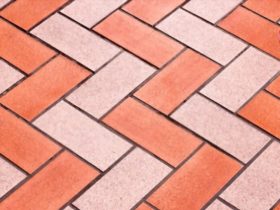What is sculptural ceramic?
Ceramic art, which sometimes straddles the boundary between craft and high art, may occasionally divide views on how it should be viewed. It’s a fantastic form of clay-based three-dimensional art. Non-metallic materials, such as natural clays or various types of earth, are used to make ceramics.
After that, the material is shaped and burned. During the firing process, the pliable base material is transformed into a hard, strong, and corrosive environment substance, resulting in long-lasting and durable components. Hand-building techniques are used by certain ceramic artists, while others use wheel-throwing machines. Polymer clays, for example, are made entirely of synthetic materials.
Hundreds of lovely ceramic sculptures in the UK to choose from, all handcrafted by British potters from all around the country. It will seem like a home when you fill your house with one-of-a-kind ceramics and sculptures. Every piece has a tale to tell.
Sculptural ceramic history
According to evidence discovered by archaeologists over the years, pottery was made independently in several parts of the world, including East Asia, Sub-Saharan Africa, the Near East, and the Americas. Ceramics is derived from Keramik, pottery, and keramos, meaning potter’s clay.
The Japanese Buddhist sculpture known as ginjo-fukuro was built entirely of moulded clay. Due to its material resilience, it can be poured with water without splitting apart. Ceramic art has a long and illustrious history. Throughout history, numerous societies have utilized ceramics as ornamentation and everyday objects, such as cooking vessels for food preparation, dating back to the Indus Valley Civilization and ancient China.
The subject of ceramic sculpture
The methods and techniques utilized to depict such creatures indicate remarkable expertise accurately. Such works are understandable to viewers, allowing for demonstrations of great technical aptitude and artists’ mastery of their craft.
That isn’t to imply that less accurate and abstract work isn’t difficult; the inventiveness and eye required to produce identifiable forms from streamlined shapes in ceramics is a challenging goal for any artist. Many ways have been devised and utilized to shape it over time.
Drawing, printing, etching, stippling, pinching, and coiling are some methods used when working with clay. The animal world is the topic of many sculptors’ work, and the intricacy and variety of creatures allow for a lot of variation in ceramic sculptures.
Architectural firms in the UK
Although London’s history spans decades, a look at the city’s leading architecture firms in the UK reveals a concentration on ground-breaking, inventive, and modern design. Many districts of London were attacked during World War II. High-rise buildings were added to London in an attempt to restore it swiftly and efficiently.
The capital of the United Kingdom has long been a canvas for forward-thinking architects from around the world. Their initiatives are located in London and its environs and Los Angeles and Bangkok on the other side of the globe.
It is home to a diverse range of distinctive structures, from architectural style and art-deco estates to modern-day glass architectures. These practices redefine architectural practice through intelligent and interesting constructions, initiatives, furnishings, and exhibits.
Archipal
Members of ArchiPal will all be certified professionals, making them trustworthy providers who follow norms of conduct and practice. ArchiPal is designed to connect you with trained or licensed specialists who can help you with specific tasks on your construction site.
Ceramic sculpture items provide strategic, practical information from certified and professional practitioners of your choosing. ArchiPal ensures that proposed designs meet specifications and are functional, safe, and cost-effective. All ArchiPal are certified and recognized practitioners with at least three years of experience.
The architect will take the time to explain your needs and then use our platform to hire the right people to put together a team to make your idea a reality.
Foster + Partners
Foster + Partners was founded by Norman Foster in 1967 and has since evolved to become a big international practice specializing in green development, urbanization, technology, and art. Foster + Partners, global practice for architecture, urbanism, and design founded on sustainability, is one of the largest architecture firms in the UK. Projects are assessed against both global and firm ecological sustainability.
Project teams collaborate in a multidisciplinary manner, involving experts in urban and scenery design, interior decorating, structural engineering, and other fields. Projects that are unique and attractive can be found in various industries.
The studio combines architecture with structural and environmental engineering, architecture, interior and commercial design, model and video creation, aerospace engineering, and many other disciplines; their academic workplace environment is comparable to that of a small university.
Rogers strik Harbour + Partners
Featuring overall terms across Europe, the Americas, Asia, and Australia over the last four decades, RSHP has garnered critical praise and honours. The studio had developed an inventive, beautiful, ecological, and practical design that creatively solves challenges for clients since the early 1970s when Lloyd’s building was constructed.
Richard Rogers Partnership was founded in 1977 by Richard Rogers and was renamed in 2007 to acknowledge Graham Stirk and Ivan Harbour’s efforts. On major global projects, 200 professionals work from the London office. The firm has designed a variety of structures, including office, residential, transportation, educational, cultural, recreation, retailing, municipal, and medical.
Grimshaw architecture
Everything they create, from structures to strategic planning to manufacturing, results from evolution that draws beauty from form, economy, and efficiency. In 1980, Sir Nicholas Grimshaw founded the practice. The firm became a partnership in 2007. With each project, Grimshaw has a better understanding of how to create forms and places, serve systems and people, and respect our planet’s vulnerability and resources.
Over 200 honours have been given to Grimshaw, including the RIBA Building of the Year, AIA Honor Awards, and the AJ100 International Practice of the Year. Comfortable, healthful surroundings that instil amazement and pleasure while concurrently responding to the practical and social requirements and ambitions of the folks they serve are the outcome of this expertise and experience.
Conclusion
Sculpture ceramic forces you to engage your imagination and consider how you’ll transmit your idea or image through art. And the habit of researching creatively can help you find new, imaginative methods to solve difficulties in your art, as well as in your everyday life.















Leave a Reply